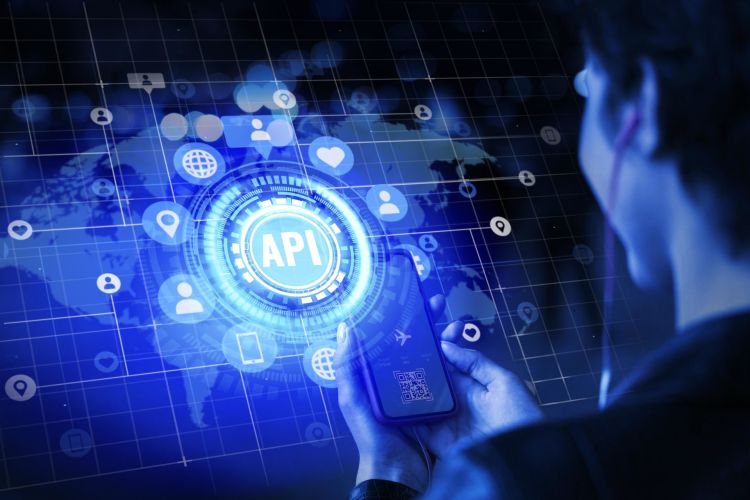
Human-Centered APIs for Better User Experiences
Application programming interfaces, or APIs, allow products to interact with other products and services. They provide flexibility, simplifying product development and maintenance. It’s easy to think of APIs as valuable technical solutions, but they’re more than that.
APIs are products for people. They provide users with personalized, relevant, accurate results while making life easier for developers. The secret is to make sure APIs offer the right, easy-to-implement services. When that happens, APIs become the building blocks of innovation.
Rethinking APIs
The conversation about APIs usually goes in one of two directions. Not surprisingly, developers have an opinion – after all, they’re the ones who will be using them. Outside of technical circles, people rarely talk about APIs. Unfortunately, too often, the big picture gets lost. APIs simplify user interfaces (UIs) and back-end systems. UIs don’t need to manage complex data processing or refer to databases. Back-end systems don’t have to worry about presentation. Imagining life without APIs shows how they impact user experiences. If APIs didn’t exist, our digital lives would look radically different:
- It would be hard to find data
APIs make it simple for businesses to communicate information both internally and externally.
- Personalization would be impossible
Today’s experience depends on APIs to share user information. Without the API, Amazon wouldn’t be able to make smart product recommendations.
- There would be no real-time information
Websites and applications rely on APIs to provide data and pass information between systems. Without APIs, e-commerce sites wouldn’t be able to show consumers when an item is out of stock.
- Products would get less reliable
Every company would have to build every service it offers. Without the API, Uber wouldn’t be able to use the Google Maps service. They would have had to develop their own. Instead of focusing on their core business, they would have to deal with defining and managing roads.
Applying Human-Centered Design
With the right approach, human-centered design contributes to the creation of desirable products. It takes people’s needs into account at every step of the process. Needs, context, behaviors, and emotions are at the heart of every decision. Designing with empathy opens up new possibilities. The human-centered design process benefits APIs. It ensures that they are user-friendly and practical. Following the process means you don’t have to hear: “No, the API doesn’t support that” or “The API doesn’t work that way.” Human-centered APIs reduce the need for compromised UI design.
Human-Centered APIs:
Human-Centric
API design is based on human needs, pain points, and problems. Understanding replaces assumptions.
Iterative
The first solution is rarely the best. Getting feedback, really listening, and iterating are the hallmarks of great design.
Result-Oriented
Combine different perspectives to define the desired future state experience.
Every day, product development teams are balancing trade offs. Instead of hoping and guessing, API development teams can focus on getting an agreement, forming meaningful partnerships, and delighting users.
If that sounds familiar, it is – experience designers do it every day. All aspects that make up user experience apply equally to APIs and user interfaces.
Human-Centered Design Stages
The human-centered design process encompasses learning, creativity, and planning. While each stage has its unique activities and goals, they all help build empathy and understanding.
Analysis
Start by understanding how the API will affect people and processes.
- Interview stakeholders, customer experience advocates, and partners to understand their goals for the API.
- Talk to developers and users to understand their pain points and motivations. Develop empathy – try to feel what they feel.
- Identify all user groups affected by the API.
- Understanding the current state of the process from a human perspective with service blueprints.
- Understanding people’s attitudes toward technology using ecosystem maps.
Creativity
With empathy and understanding, draw a picture of the future. Draw a picture of how things could work and what services the API could provide. Get feedback as you bring each idea to life, and then iterate. To visualize how an API might work, try it out:
- Conduct a workshop with different opinions to generate ideas.
- Create blueprints of future state services to illustrate how the API would be used in applications and affect processes
- Create a prototype of the API portal. Whether internal or external, developers must use the API to make it worthwhile.
- Presenting how information from the API will fit into the user experience using task models
- Requesting feedback from developers, partners, and users.
Roadmap
Once you’re confident that the API solution is on the right track, it’s time to develop an implementation plan. Work together to define the MVP and the product roadmap. Be sure to discuss the decisions made and ensure everyone is on the same page.
- Think about how the API will be maintained and whether organizational changes are needed.
- Create a roadmap to show how the product will evolve.
- Schedule time to get feedback from developers
- Share the proposed timeline with internal departments, such as marketing, so they can prepare and support the changes.
- Creating for people creates better code. Human-centered APIs are easy to use, stimulating play, and provide endless possibilities. Gathering feedback and building relationships help ensure the success of APIs.
Final Thoughts
As technology standards and best practices evolve, developers will push scores of excellent new APIs into the public realm. The API user experience is critical — especially since so many applications adopt APIs to enrich themselves. Technological advancements will help make API-centric functions increasingly seamless. Our goal is to make API products useful and usable to make them successful. Hence, human-centered API design is the most relevant approach.



